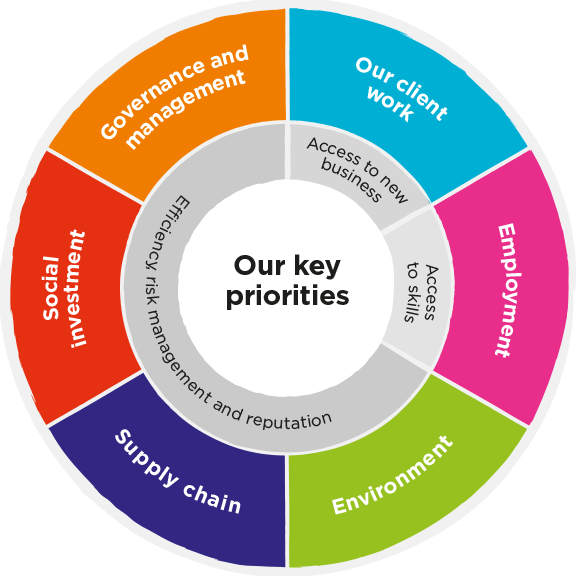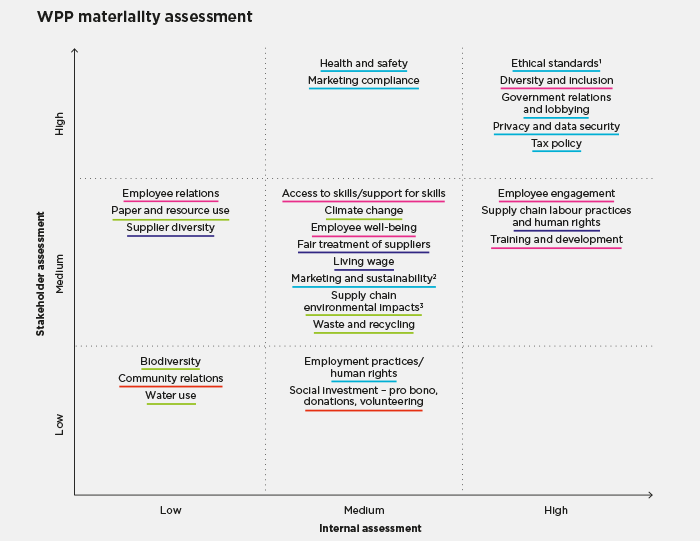We group our priority issues into six themes, as shown in the diagram. The inside ring on the diagram indicates the main ways these themes relate to the three elements of our business case for sustainability.

Our client work
How we work with clients on sustainability and our ethical standards:
- Business ethics
- Client work ethics
- Government relations and public policy
- Marketing and sustainability (including sustainable consumption)
- Marketing compliance
- Partners (JVs, affiliates, associates) and acquisitions
- Privacy and data security
- Sensitive countries
Employment
How we recruit, retain, develop and engage our people:
- Access to skills (including education and internships)
- Diversity and inclusion
- Employee engagement
- Employee relations
- Employee well-being
- Employment practices/human rights
- Health and safety
- Training and development
Environment
How we work to reduce our environmental footprint:
- Climate change
- Paper and resource use
- Supply chain environmental impacts (including environmental impact of campaigns)
- Waste and recycling
- Water use
Supply chain
Our approach to responsible sourcing:
- Fair treatment of suppliers
- Living wage
- Supply chain labour practices and human rights
Social investment
How we support charities and social causes through:
- Pro bono work
- Donations
- Volunteering
Governance and management
How we manage sustainability risks and opportunities, including:
- Roles and responsibilities for sustainability
- Risk management
- Stakeholder engagement
- Tax policy
Our materiality process
Our materiality process helps us to prioritise the social, environmental and economic issues of most importance to our business, to identify new issues and emerging trends and align our work to the priorities of our stakeholders. It takes account of our business strategy and goals as well as external trends, and current and emerging risks and opportunities.
Our first formal materiality assessment in 2014 included interviews with clients, investors, NGOs and sustainable business experts as well as senior executives in our Group functions and our operating companies. We updated this assessment during 2016 through an internal review and interviews with key external stakeholders. In 2017, we updated our assessment using the results of our sustainability self-assessment (see Governance). This provided further insight into the sustainability priorities of our operating companies and information requests made by clients across our global operations. As a result we have increased the ranking of two issues: health and safety and supplier diversity.
Our materiality matrix, below, shows the issues identified as important to our stakeholders (vertical axis) and our business (horizontal axis). We report on all issues identified as highly important and the majority of issues of medium importance.
WPP materiality assessment

- Our client work
- Our people
- Environment
- Supply chain
- Social investment
- Governance and management